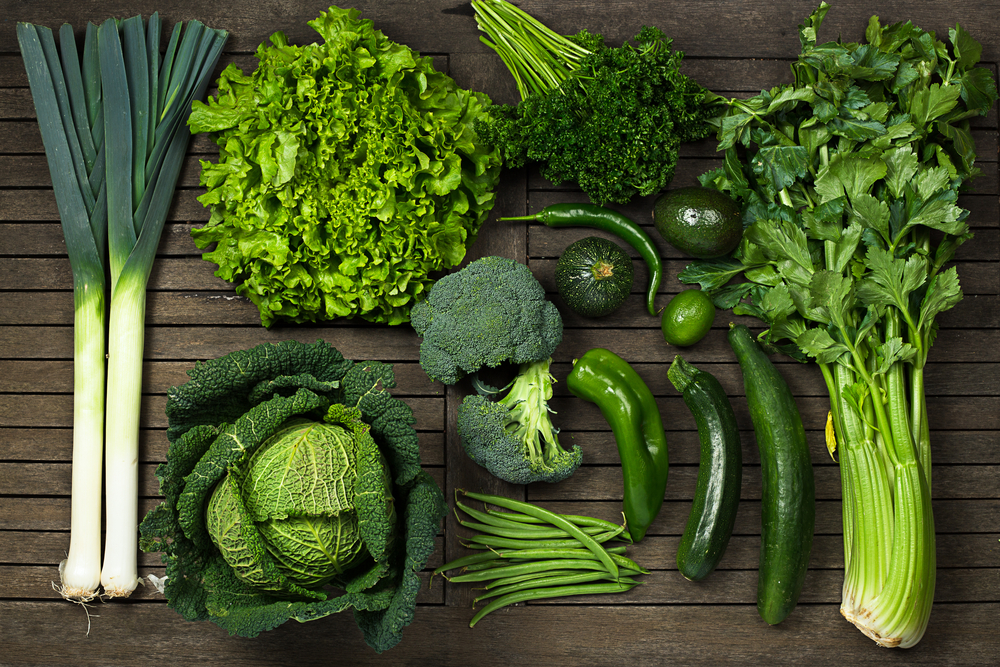Leafy greens are among the most nutrient-dense foods available, and two of the most celebrated varieties are spinach and kale. These leafy vegetables are not only versatile and delicious but also packed with vitamins, minerals, and antioxidants that contribute significantly to overall health. This article explores the benefits of spinach and kale, their nutritional profiles, and how to incorporate them into your diet for optimal health.
Understanding Leafy Greens

Leafy greens refer to the edible leaves of plants, which are often rich in essential nutrients. They are typically low in calories but high in vitamins, minerals, and fiber. Including a variety of leafy greens in your diet can enhance your nutrient intake and support various bodily functions.
Nutritional Powerhouses
Both spinach and kale are classified as superfoods due to their impressive nutritional profiles. They are excellent sources of vitamins A, C, and K, as well as minerals like iron, calcium, and magnesium. Additionally, these greens contain phytonutrients and antioxidants, which help combat oxidative stress and inflammation in the body.
Spinach: A Nutrient-Dense Green
Nutritional Profile of Spinach
Spinach is a leafy green that belongs to the Amaranthaceae family. A one-cup (30 grams) serving of raw spinach contains:
- Calories: 7
- Protein: 0.9 grams
- Fat: 0.1 grams
- Carbohydrates: 1.1 grams
- Fiber: 0.7 grams
- Vitamin A: 2813 IU (56% of the Daily Value)
- Vitamin C: 14 mg (24% of the Daily Value)
- Vitamin K: 145 mcg (181% of the Daily Value)
- Iron: 0.8 mg (4% of the Daily Value)
Health Benefits of Spinach
- Rich in Antioxidants: Spinach contains several antioxidants, including lutein and zeaxanthin, which are known to support eye health by reducing the risk of cataracts and age-related macular degeneration.
- Bone Health: The high vitamin K content in spinach plays a crucial role in bone health by promoting calcium absorption and bone mineralization.
- Heart Health: Spinach is rich in nitrates, which can help lower blood pressure and improve arterial function. Its antioxidant properties also contribute to cardiovascular health.
- Supports Healthy Skin: The vitamins and antioxidants in spinach help maintain healthy skin by combating oxidative stress and promoting a youthful appearance.
- Enhances Muscle Function: Spinach is a good source of nitrates, which have been shown to enhance exercise performance by improving muscle efficiency and reducing fatigue.
Kale: The Nutrient-Dense Superstar
Nutritional Profile of Kale
Kale is a member of the Brassica family, which includes other cruciferous vegetables like broccoli and Brussels sprouts. A one-cup (67 grams) serving of raw kale contains:
- Calories: 33
- Protein: 2.9 grams
- Fat: 0.6 grams
- Carbohydrates: 6 grams
- Fiber: 1.3 grams
- Vitamin A: 10302 IU (206% of the Daily Value)
- Vitamin C: 80 mg (135% of the Daily Value)
- Vitamin K: 547 mcg (684% of the Daily Value)
- Calcium: 94 mg (9% of the Daily Value)
Health Benefits of Kale
- High in Nutrients: Kale is one of the most nutrient-dense foods on the planet, providing an abundance of vitamins and minerals in a low-calorie package.
- Supports Heart Health: Kale contains bile acid sequestrants that can help lower cholesterol levels, reducing the risk of heart disease. Its antioxidants also help prevent oxidative damage to heart cells.
- Anti-Inflammatory Properties: The presence of omega-3 fatty acids and various antioxidants in kale helps reduce inflammation in the body, which is linked to numerous chronic diseases.
- Promotes Healthy Digestion: Kale is high in fiber, which aids digestion and promotes regular bowel movements. This can help prevent constipation and support gut health.
- Cancer Prevention: Kale contains compounds called glucosinolates, which have been shown to have protective effects against certain types of cancer by promoting detoxification processes in the body.
How to Incorporate Spinach and Kale into Your Diet
Adding spinach and kale to your meals is easy and versatile. Here are some delicious ways to enjoy these leafy greens:
1. Smoothies
Blend spinach or kale into your morning smoothie for an added nutrient. Combine with fruits like bananas, berries, and yogurt for a delicious and healthy breakfast.
2. Salads
Create a vibrant salad by mixing fresh spinach or kale with other vegetables, nuts, and a light vinaigrette. Experiment with toppings like avocado, seeds, and grilled chicken for added flavor and nutrition.
3. Soups and Stews
Add chopped spinach or kale to soups and stews during the last few minutes of cooking. This enhances the nutritional value of the dish while adding a pop of color.
4. Stir-Fries
Incorporate spinach or kale into stir-fries by adding them to the pan at the end of cooking. They wilt quickly and absorb the flavors of the other ingredients.
5. Sautéed Greens
Sauté spinach or kale with garlic and olive oil for a simple and nutritious side dish. Season with salt, pepper, and lemon juice for extra flavor.
Tips for Selecting and Storing Spinach and Kale
Selecting Fresh Greens
- Look for Vibrant Color: Choose spinach and kale with deep green leaves, as this indicates freshness and nutrient density.
- Check for Firmness: The leaves should be crisp and firm, not wilted or yellowing.
Storing Greens
- Refrigeration: Store spinach and kale in the refrigerator to maintain freshness. Place them in a perforated plastic bag or a container with a damp paper towel to keep them hydrated.
- Use Quickly: For the best flavor and nutritional quality, consume spinach and kale within a few days of purchase.
Conclusion
Incorporating leafy greens like spinach and kale into your diet is a simple yet effective way to enhance your health knowledge. These nutrient-dense vegetables provide a wealth of vitamins, minerals, and antioxidants that support various bodily functions, from heart health to bone strength. By enjoying spinach and kale in a variety of dishes, you can reap the numerous benefits they offer and contribute to a balanced, healthful diet. Embrace the power of leafy greens and make them a staple in your meals for improved well-being and vitality!
Read Also About Green smoothies have become a popular choice for those looking to boost their nutrient intake while enjoying a delicious and refreshing beverage. Packed with leafy greens like spinach, kale, and parsley, along with fruits like bananas, berries, and apples, green smoothies are a fantastic way to consume essential vitamins, minerals, and antioxidants.



